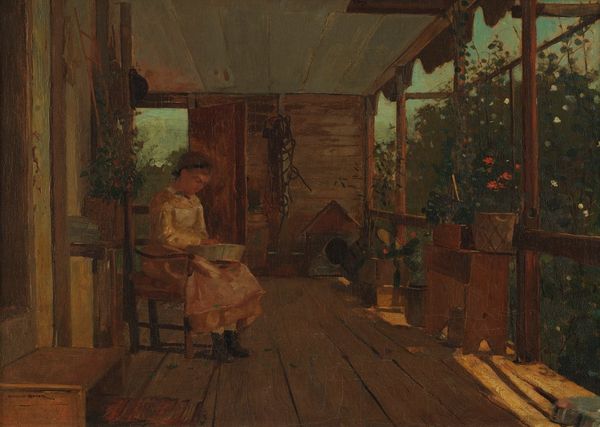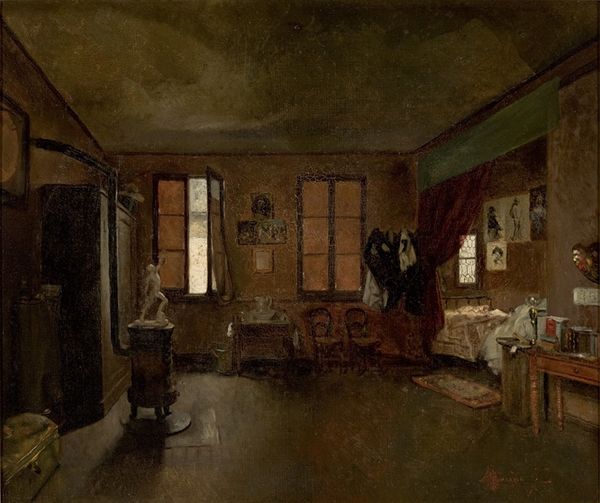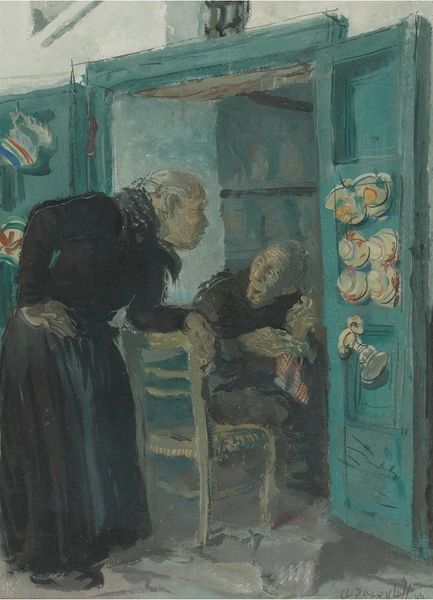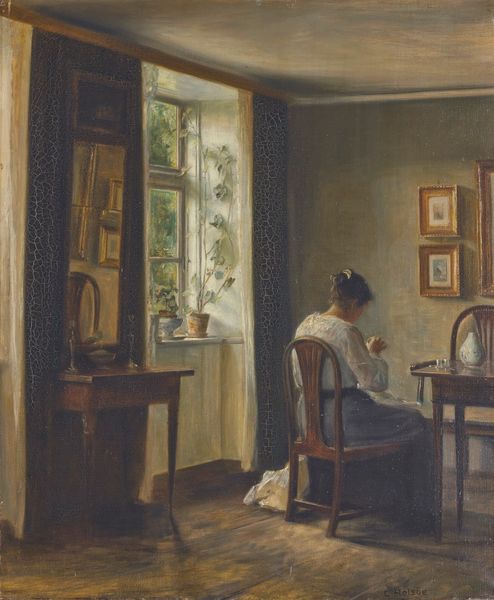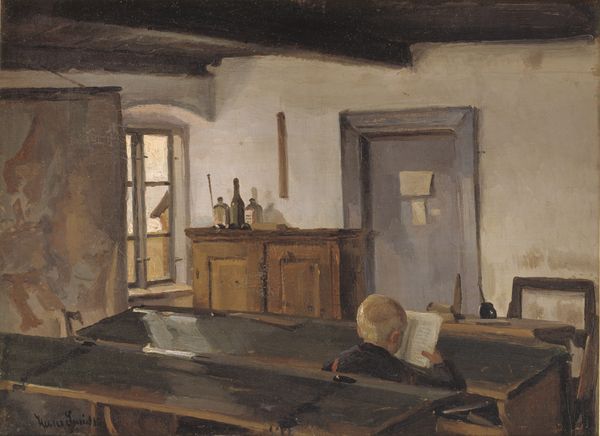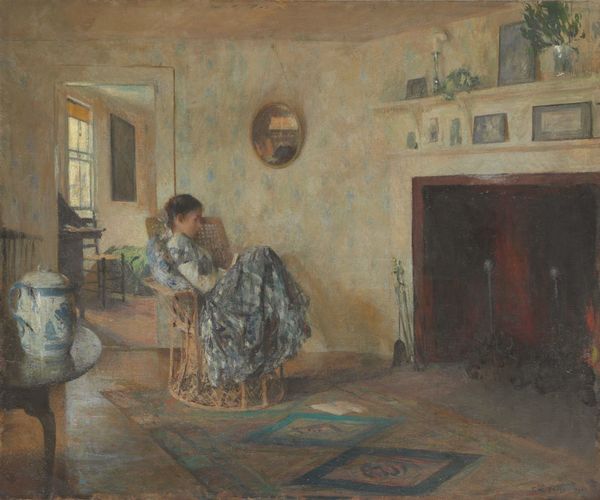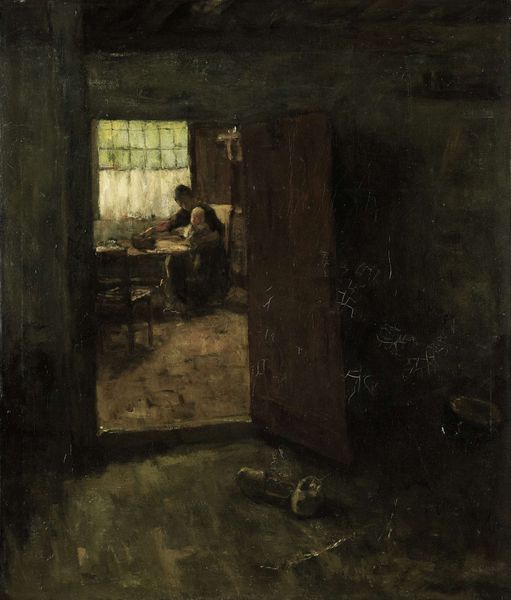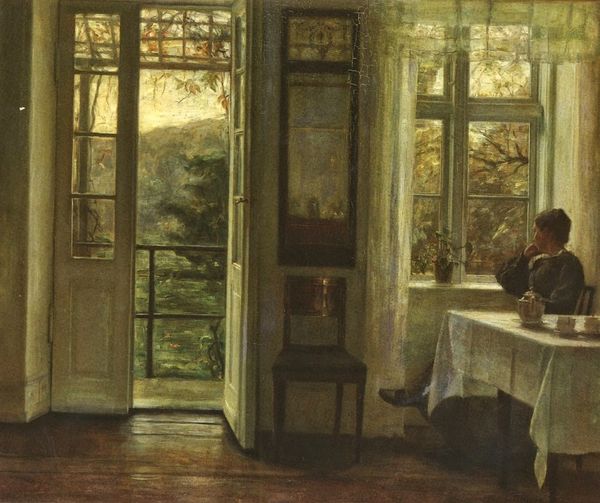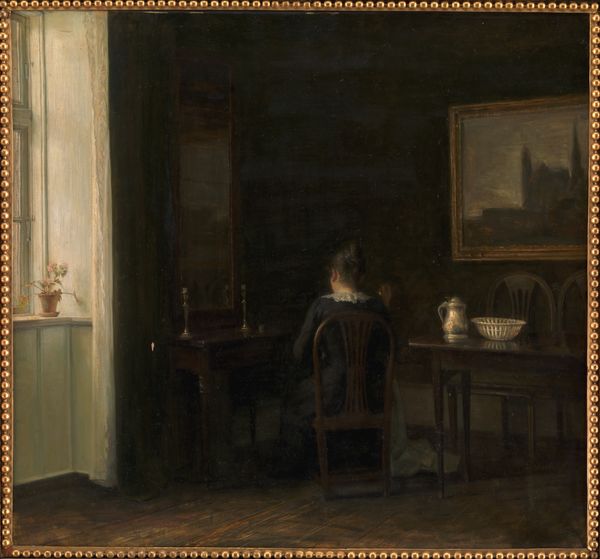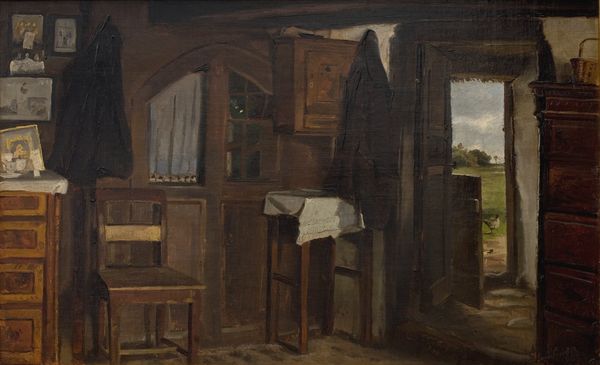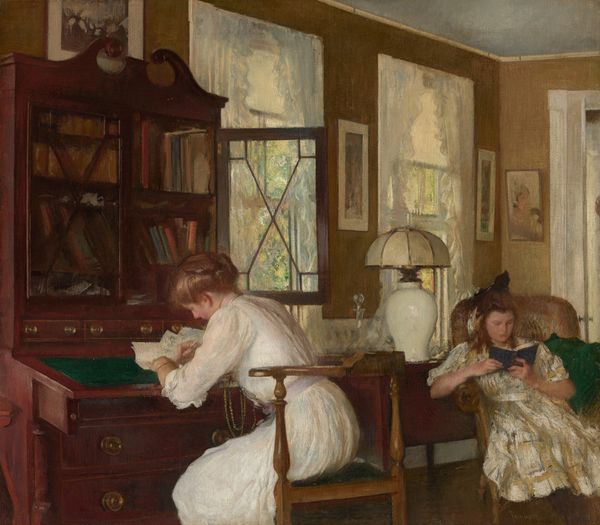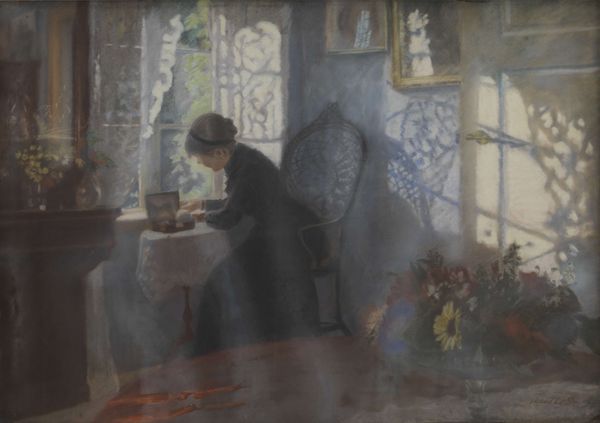
painting, oil-paint, impasto
#
portrait
#
painting
#
oil-paint
#
landscape
#
oil painting
#
impasto
#
genre-painting
#
realism
Dimensions: 38 cm (height) x 50 cm (width) (Netto), 54 cm (height) x 65.8 cm (width) x 7 cm (depth) (Brutto)
Curator: What an intriguing image. Where shall we begin? Editor: This is "Interior with a Little Girl" by Hans Smidth, sometime between 1854 and 1917. It’s an oil painting. There’s a stillness to the scene, almost like a stage set. What do you make of it? Curator: I think this work subtly critiques the performative nature of domesticity in the late 19th century. We see a young girl, positioned near the threshold of inside and outside, her back turned, almost ghost-like. How does this resonate with prevailing societal expectations of women and their roles? Editor: So, the artist isn't just showing us a domestic scene, but also questioning the expectations placed on young women? Curator: Exactly! The interior, while rendered with detail, feels somewhat claustrophobic. Consider the wallpaper, the looming furniture, the half-open cupboard; these details speak volumes. This piece suggests a social critique. What do you observe about the colour palette, its impact in expressing its historical period and the role of women within? Editor: It is mostly muted colours with a ray of sunlight shining on the foreground table through the door's threshold. Curator: The contrast in illumination could point to the contrast in societal roles in the late 19th century, which adds depth to Smidth’s perspective on genre-paintings. This period saw intense debates around women’s education and participation in public life, so paintings like this become crucial visual documents, no? Editor: Definitely. Seeing the painting through that lens makes it much more powerful. It is fascinating to learn new contexts through visual examples. Curator: Indeed, engaging with art is so much more than just understanding forms and colours. It invites conversations and opens new avenues for interpretation.
Comments
No comments
Be the first to comment and join the conversation on the ultimate creative platform.
